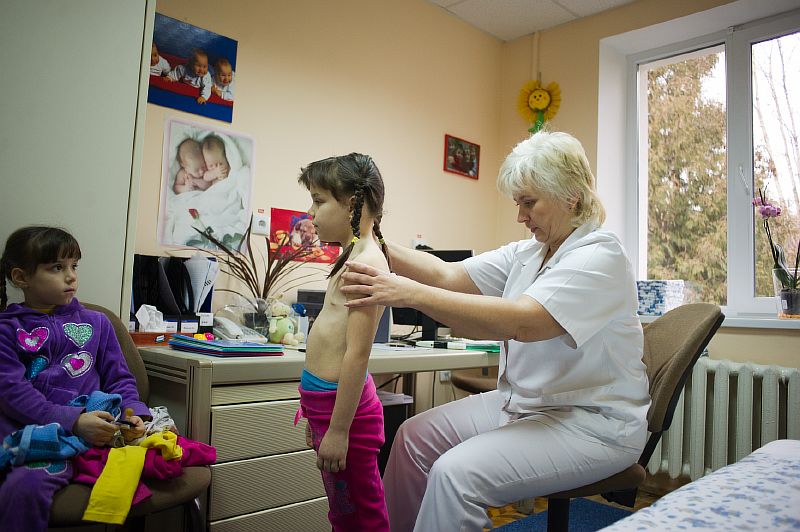
This rehabilitation program targets patients suffering from various forms of vetrebrogenic diseases, visceropathy, impaired posture and scoliosis (see Indications and Contraindications).
As science and technology have continued to advance, man has gone from an active lifestyle to a sedentary one, which has caused various illnesses of the spinal column to appear. They affect people during the most active period of their lives (80% of the patients are from 20 to 60 years old), although osteoporosis has "become younger” in recent years. Today, about one million people are treated annually for degenerative and dystrophic diseases of the spinal column in Ukraine; 16,000 of these patients have been classified in one of several disability categories.
Preliminary analysis of monitoring treatments of patients with vertebrogenic pathologies were highly effective and reduced the number of patients classified in disability categories. In this regard, the specialists at the International Clinic of Rehabilitation in Truskavets and the Elita Rehabilitation Center in Lviv created a program for the rehabilitation of patients with vertebrogenic syndromes.
Goal - to prevent disabilities caused by various vertebrogenic diseases, overcome painful extravertebral syndromes (neural and neurovascular, muscular, or visceral), provide for posture correction, and promote the patient’s everyday adaptation in the community.
The Intensive Neurophysiological Rehabilitation System (INRS) is used for rehabilitation purposes. It includes a two-stage alternating treatment course.
The intensive correction stage is carried out at our clinics (the International Clinic of Rehabilitation in Truskavets or the Elita Rehabilitation Clinic in Lviv), and generally lasts two weeks.
It includes the following activities:
Examination of the patient, which should comprise an evaluation of the patient’s vertebrogenic, neurological, and somatic status before and after treatments. Therapeutic measures:
- biomechanical correction of the spinal column,
- reflexotherapy,
- special massage systems,
- RPT (Remedial Physical Training),
- apitherapy in the form of wax and paraffin applications; bee venom can be used in individual cases,
- mechanotherapy,
- gait correction,
- sessions on the Dolphin simulator,
- games therapy using a tensoplatform and the X-Box,
- light therapy
Apart from these activities, patients are given recommendations for hygiene in static positions, further motor regimen, and the amount of exertion; specific tasks are assigned, i.e. instructions to be followed during the period in between treatment courses.
The stabilization and potentiation stage is performed by the patients or with the assistance of the district medical staff at home or at the current place of residence. It lasts from three months up to one year. It includes the following activities:
- carrying out the instructions made by the doctors of the medical center,
- having additional tests made, if necessary (MRI, functional X-rays, vascular Doppler, consultations with a neurosurgeon, orthopedist, rheumatologist, etc.).
Patients are selected for treatment courses by specialists of the International Clinic of Rehabilitation in Truskavets or the Elita Rehabilitation Center in Lviv.
- according to the analyses made by the neurologist or neurosurgeon, or resulting from other therapeutic treatments in hospitals, etc.,
- according to conclusive analyses provided by the MRI, functional X-rays, vascular Doppler, etc.,
- after consulting with specialists at the International Clinic of Rehabilitation in Truskavets or the Elia Rehabilitation Center in Lviv, and clarifying the patient’s status and his/her need for additional treatments.
